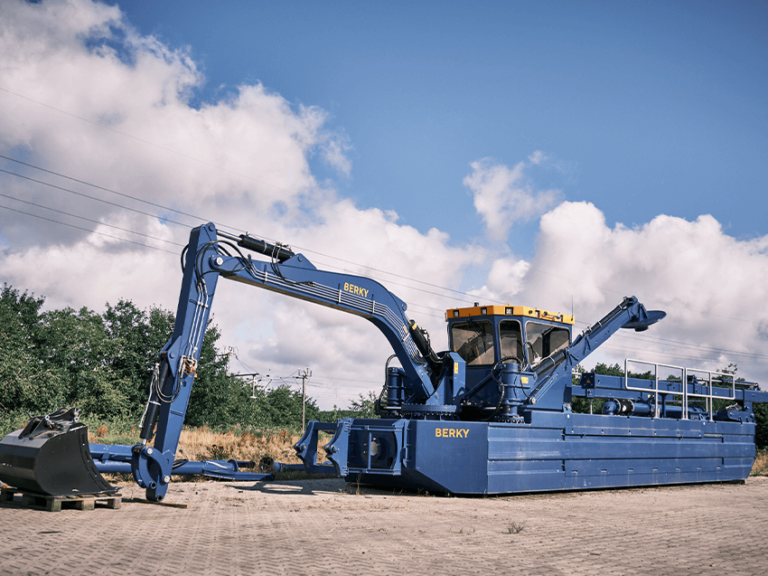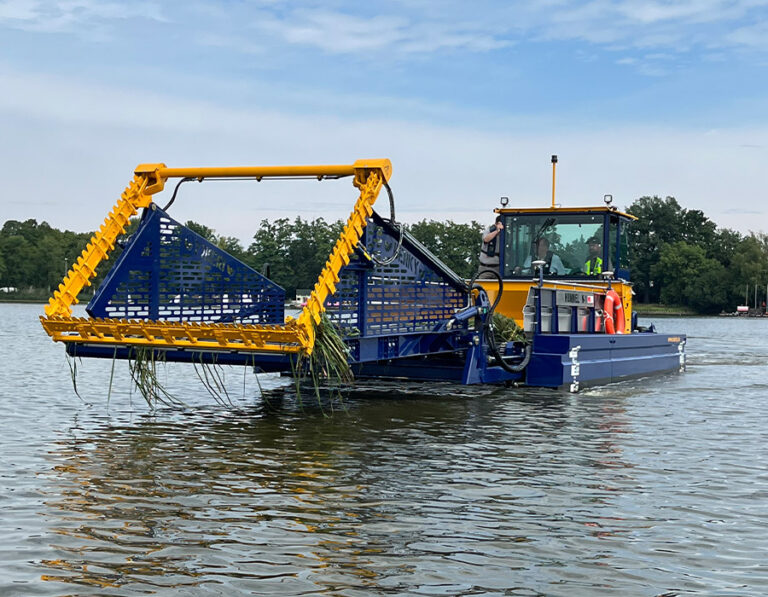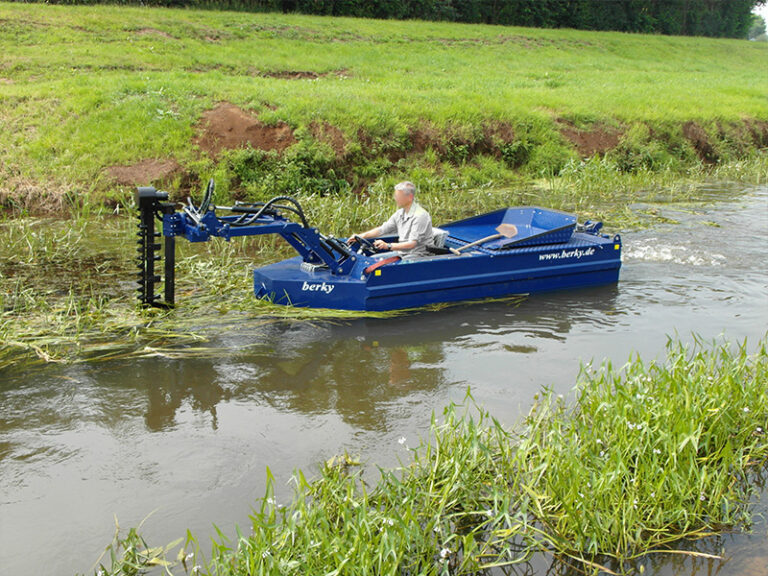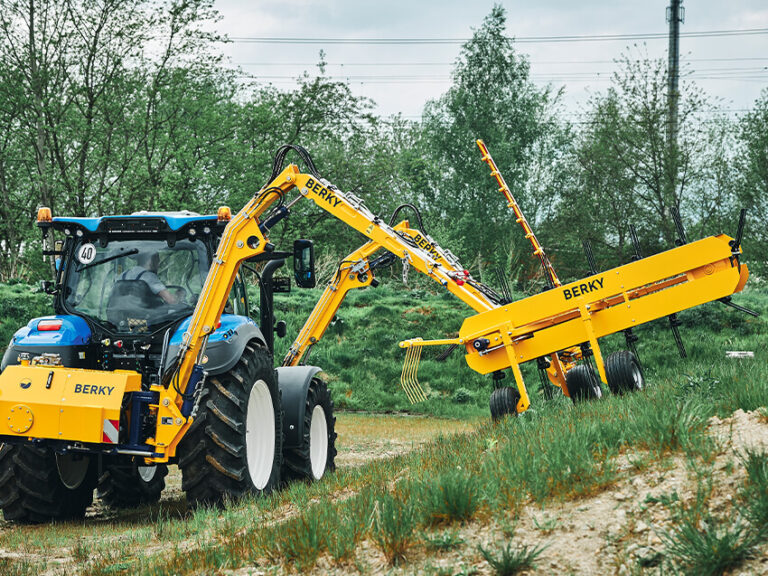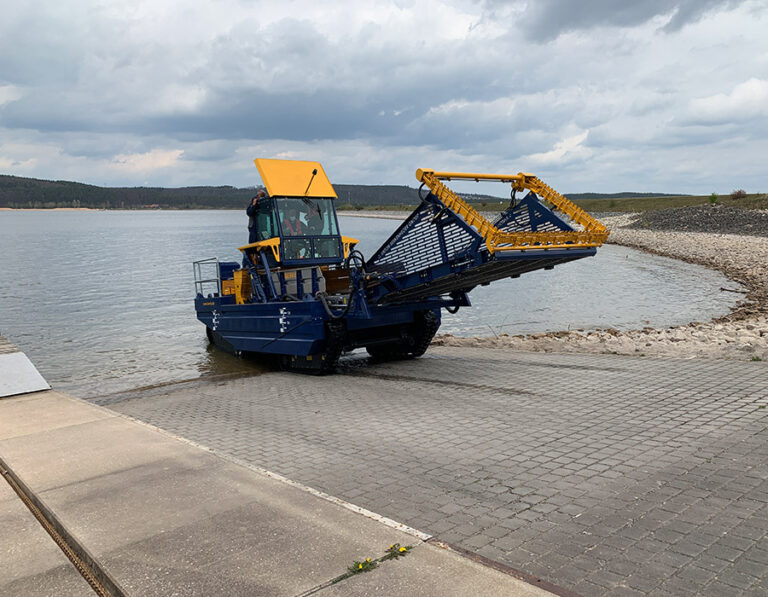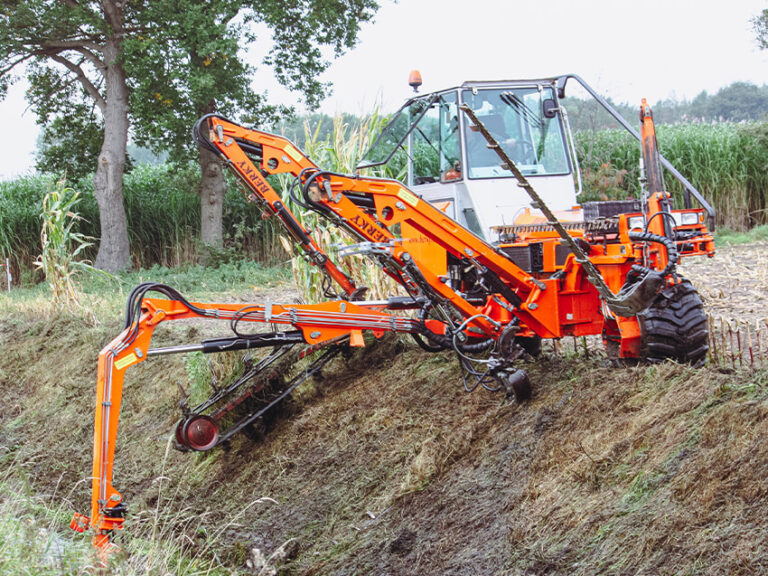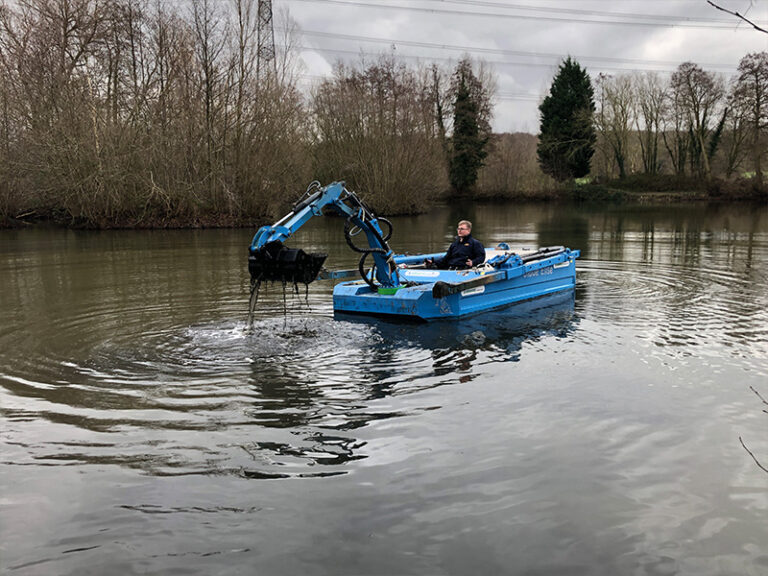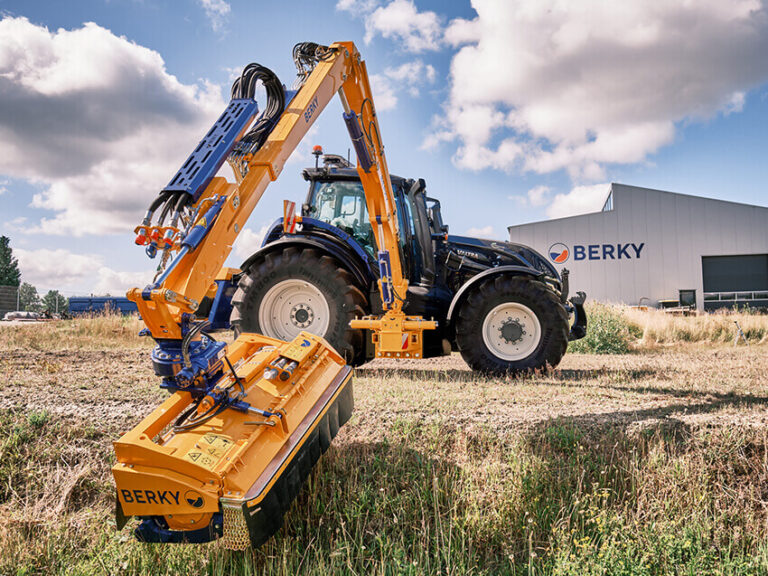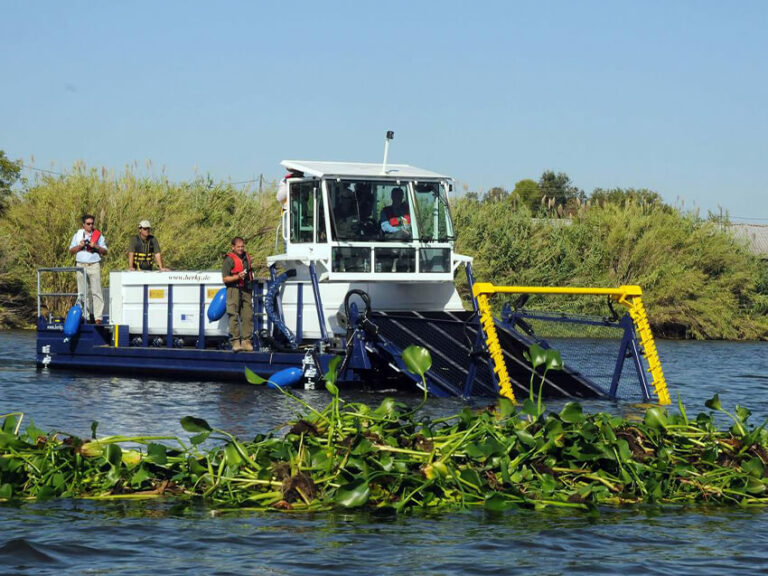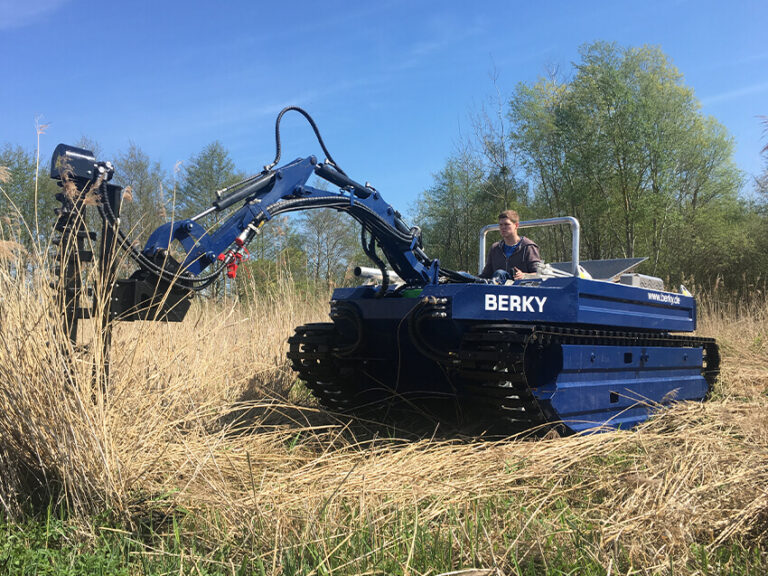Sustainable sludge removal for healthy water bodies
Sediment removal and sludge reduction for lakes, rivers, and ponds
Why desludging is essential for sustainability
Natural deposits, nutrients, plant debris, or sediments from the surrounding area contribute to the formation of sludge. Over time, this accumulates on the bottom and impairs the quality and function of the water body. The water becomes shallower, algae spread, and oxygen depletion endangers fish and other living organisms. At the same time, the risk of flooding increases because the retention volume is lost.
Siltation also means restrictions and high follow-up costs for use, whether as bathing water, retention basins, or fish ponds. Without targeted sludge removal, the situation steadily deteriorates and it becomes almost impossible to restore ecological balance.
Efficient desludging with BERKY machines
We remove sludge and sediment in a sustainable and environmentally friendly manner using powerful dredgers, amphibious vehicles, and pumping units. The material is sucked up, transported away, or forwarded for later use. Our solutions can be flexibly applied to small ponds, large lakes, rivers, or industrial waters. This ensures that your water bodies remain functional, ecologically intact, and safe in the long term.
BERKY NEREUS
The BERKY NEREUS series was specially developed for the precise removal of sediment and desludging of water bodies.
BERKY Poseidon 770
As a multifunctional, amphibious dredger, the BERKY POSEIDON 770 efficiently removes sediment from bodies of water.
Your advantages with BERKY
Decades of experience in water management
Customized technology for ponds, lakes, rivers, and canals
Efficient and sustainable sediment removal
Gentle on nature and
ecosystems
Who benefits from efficient sludge removal?
Sludged-up water bodies are not only an ecological problem, but also a burden for municipalities, businesses, and private users. With our flexible technology and extensive experience, we support a wide range of groups in restoring their water bodies to efficient and sustainable use. Whether municipal lakes, industrial retention basins, or private ponds, BERKY offers the right solution for every project.
Municipalities & Water Associations
Landscape & environmental projects
Industry & commercial use
Fishing & Private Customers
Find the right BERKY -solution in just a few steps
With your answers, we can quickly find the best solution for you!
Successful BERKY
Desludging projects
BERKY has successfully implemented numerous projects worldwide. Our technology has proven itself in both small bodies of water and large-scale remediation projects. Through efficient sediment removal, we improve water quality, ensure usability, and contribute to ecological stability.
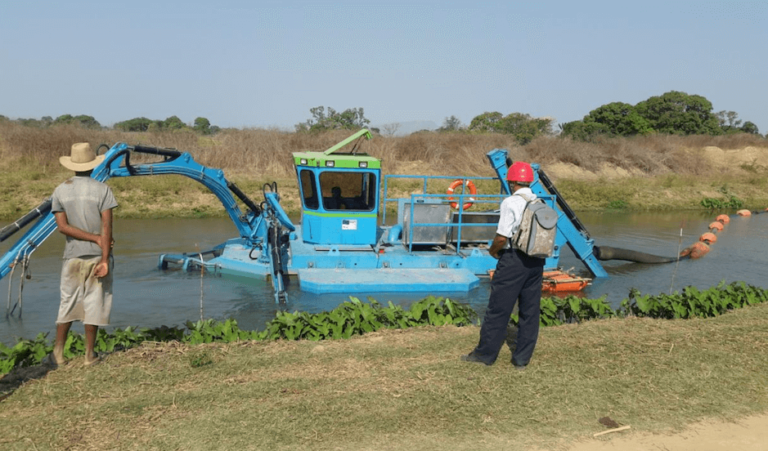
Case study: Effective water management – BERKY POSEIDON desludging boat protects against the risk of flooding.
In this case study, we show the use of our BERKY POSEIDON to protect against flooding in Madagascar.
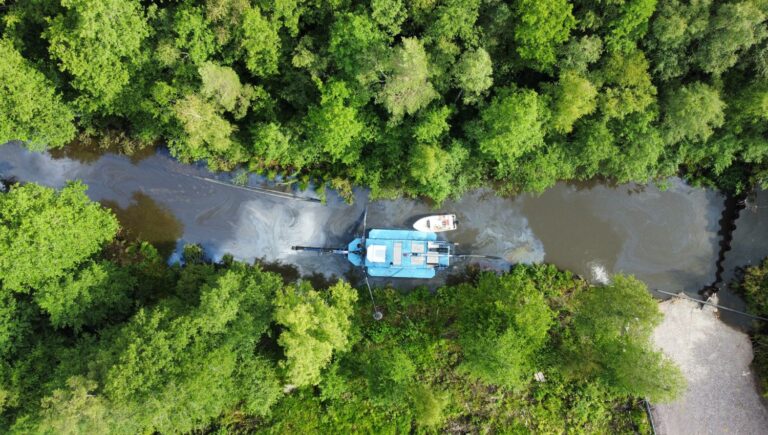
Remediation of old industrial sites: Removal of contaminated sludge
In Åsbro, Sweden, ProGroupe used the BERKY POSEIDON 770 to remove 16,000 m³ of contaminated sediment, restoring water quality with GPS-guided dredging and geotextile filtration technology.
Sustainable
sludge removal
During every operation, we make sure to keep the impact on fish, plants, and the ecological balance as low as possible. Sediments are sucked up in a targeted manner without causing large-scale interference in the water body.
This minimizes oxygen depletion and the release of pollutants. Our work not only contributes to the functionality of water bodies, but also to their renaturation and long-term stabilization.
Sludge removal FAQ
How often should a body of water be desludged?
The necessity depends on size, inflow, and use. Many bodies of water require desludging every 10–20 years, or sooner if there is a high sediment inflow.
Is desludging harmful to fish and plants?
No. BERKY uses methods that are as gentle as possible. The impact on flora and fauna is minimized so that the ecological balance is maintained.
What happens to the removed sludge?
Depending on its composition, it is processed, temporarily stored, or landfilled. In some cases, it can also be used for agricultural purposes.
How long does a desludging project take?
That depends on the size of the body of water and the amount of sediment. Smaller ponds can be treated within a few days, while larger projects require more time.
How can I tell if my water body needs to be desludged?
Typical signs include cloudy water, algae blooms, unpleasant odors, a significant reduction in depth, or increased fish mortality.
Is desludging also suitable for large bodies of water?
Yes. Our technology is scalable and can be used in small ponds as well as large lakes, rivers, or industrial basins.
What expenses should I expect?
The expenses vary greatly. Factors include the amount of sediment, the type of water body, and the technology used. We will provide you with a customized quote after an initial analysis.
What is the difference between desludging and water remediation?
Desludging focuses on sediment removal. During remediation, additional measures are taken to improve water quality in the long term (e.g., nutrient management, renaturation).
Berky ProduCTS
FOR A CLEAN WORLD
Professional machines for watercourse maintenance and care. With hand-guided equipment, self-propelled machines as well as mowing and collecting boats for clean waters.
With BERKY, you have the right machine manufacturer at your side.
CONTACT US NOW
Request a quotation or have questions about our products?
